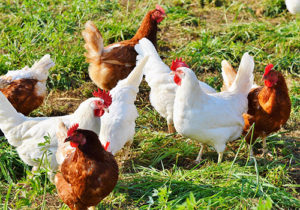Many people who want to run a chicken farm want to know what equipment is needed for a new chicken farm. How to build a chicken house reasonably?
Cage
(1) Assembly of chicken battery cages: Individual chicken cages are assembled into a cage group.
Full-step chicken cage: The upper and lower cages are completely staggered, usually 2-3 layers. The utility model has the advantages that the bottom of the cage does not need to have a dung board, and if it is a pit, there is no clearing system; the structure is simple; the ventilation and the surface of each layer are large. The disadvantages are: large floor space, low stocking density, and more equipment investment.
Half-step cage: The upper and lower cages overlap 1/4-1/2, and a certain angle of the snorkel is installed above the lower overlap. The ventilation effect is worse than the full step, but the breeding density is higher.
Battery chicken cages: The upper and lower cages are completely overlapped, with 3-4 layers being common and 8 layers being high, and the stocking density is greatly improved. The advantages are: high utilization rate of the chicken house and excellent production efficiency. The disadvantage is that the construction, ventilation equipment and dehumidification equipment of the chicken house are relatively high, which is not convenient for observing the flock and difficult to manage.
Single-layer platoon: The top net of the cage is at the same level. Although the breeding density is high and the utilization rate of the house is high, there is no obvious cage group and lane, and management and feeding are difficult.
(2) Breeding chicken cages: 2-3 layers of overlapping or semi-stepped cages are generally used.
(3) Breeder cages: The poultry farm cage has a single layer cage and two layers of artificial insemination chicken cages. The former is a mating male and female cage. The latter is often used in artificially inseminated chicken farms, and the original breeder farms can also be used for pure individual egg production records.

Drinking water equipment
Drinking water equipment includes pumps, water towers, filters, restriction valves, drinking fountains and plumbing facilities. Common types of drinking fountains are:
(1) Long-shaped sink: The advantage is that the structure is simple, the cost is low, and the drinking water is immune. The disadvantage is that the water consumption is large, the pollution is easy, and the brushing workload is large.
(2) Vacuum drinker: Its advantage is that the water supply is balanced and easy to use. The disadvantage is that the cleaning workload is large and cannot be used when the amount of drinking water is large.
(3) Nipple type drinker: It has the advantages of saving water and being beneficial to epidemic prevention, and does not need to be cleaned and replaced frequently. The disadvantage is that each layer of chicken cages need to be equipped with a decompression water tank, which is not conducive to drinking water immunity, and the material and manufacturing precision requirements are also high.
(4) Cup-type drinking fountains: The advantage is that water can be supplied according to the required amount to save water. The disadvantage is that the cup needs to be cleaned frequently and requires a filter and water pressure adjustment device.
(5) Hanging tray type drinking fountain: the advantage is to save water and easy to clean. The disadvantage is that the height of the drinker needs to be adjusted according to the different growth stages of the flock.